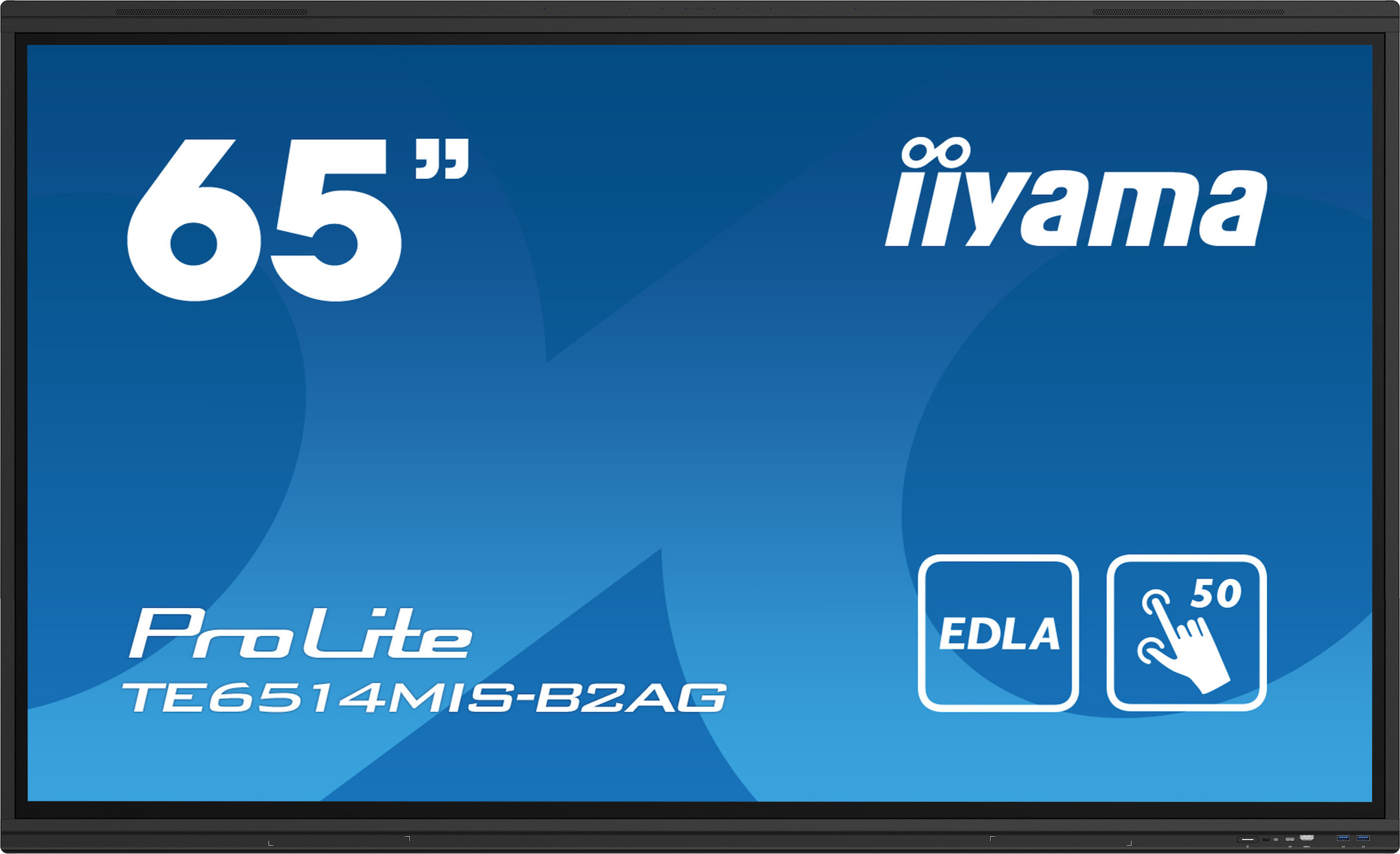































£1,517.00*
- Resolution 3840 x 2160 4K UHD
- Max. Brightness 435 cd/m²
- Panel type VA
- Contrast Ratio 4,000 :1



Product information
The TE6514MIS-B2AG is an interactive 4K UHD display with Google EDLA certification. It has been manufactured with the highest precision and features a zero-airgap LCD with excellent viewing angles and precise PureTouch IR+ technology with palm recognition. Powered by iiWare 12E and equipped with Wi-Fi connectivity, it can be easily integrated into your IT infrastructure and is supported by the iiyama (DMS) device management platform.
Excellent wireless sharing capabilities with the intuitive iiyama Share and EShare apps enable seamless brainstorming and effective collaboration in your business or educational institution.
With its 4K interface and customisable user profiles, the TE6514MIS-B2AG offers easy access to apps and cloud drives.
PURETOUCH-IR+
PureTouch-IR⁺ from iiyama offers 1 mm touch accuracy and enables extremely pleasant and fast touch functionality with every annotation.
iiyama DMS
iiyama DMS provides companies with a convenient, fast and unified management solution for end devices, builds an efficient real-time device management system, helps iiyama DMS provides companies with a convenient, fast and unified solution for digitising the education or office environment and makes device management extremely convenient. iiyama DMS is committed to GDPR compliance.
iiWare 12E
With iiWare 12E, you can create your presentations with Note, Browser and Cloud Drive via an intuitive and user-friendly software that allows you to effortlessly manage, customise and access different apps.
iiyama Share
Connect up to 9 devices and easily share, stream and edit your content from your device (notebook, tablet or smartphone) or vice versa, from your interactive display. iiyama Share supports AirPlay, Chromecast and Miracast.
Built-in speakers & microphone
The high-quality built-in 8-array microphone and two directional speakers support conference configurations with ultra-clear sound and 8 m voice transmission.

USB-C connection
Delivers the latest video, audio and touch signals via a single connection and even charges your device with 100W of power.
Technical data
| Name | iiyama TE6514MIS-B2AG 65" Touch display |
|---|---|
| Article number | 1000032142 |
| GTIN/EAN | 4948570124022 |
| Manufacturer SKU | TE6514MIS-B2AG |
| EPREL ID | 1941671 |
| Model name | TE6514MIS-B2AG |
| Brand | iiyama |
| Product Type | Touch display |
| Product Series | iiyama TE Series |
| Technology | LCD |
| Panel type | VA |
| backlight | LED |
| Resolution | 3840 x 2160 4K UHD |
| Diagonal | 65" |
| Aspect Ratio | 16:9 |
| Viewing angle - Horizontal | 178° |
| Viewing angle - Vertical | 178° |
| Contrast Ratio | 4,000 :1 |
| Screen finish | Matt |
| Max. Brightness | 435 cd/m² |
| run-time | 24/7 |
| Response time | 6.5ms |
| Support - VESA | 600 x 400 |
| Frame width | 16.5 mm |
| Operating system | Android |
| Inputs | 1x 3,5mm Jack , 1x Displayport , 1x RS232 , 2x Ethernet , 2x USB-C , 4x HDMI , 6x USB-A |
| Outputs | 1x HDMI |
| wireless technology | WiFi |
| Features | Touch screen |
| Product width | 148.8 cm |
| Product height | 90.8 cm |
| Product depth | 8.6 cm |
| Weight | 39 kg |
| Colour | Black |
| EEK Spectrum | A to G |
| Energy efficency class | G |
| Delivery contents | HDMI Cable , Power cable , USB cable |
| Condition | New |
| Warranty | 36 Month |
| Warranty type | Onsite Repair Service and support information |
Product safety
| Person responsible for the EU |
|---|
| iiyama International Corporate |
| Wijkermeerstraat 8 |
| 2131 HA Hoofddorp |
| Netherlands |
| info.de@iiyama.com |



